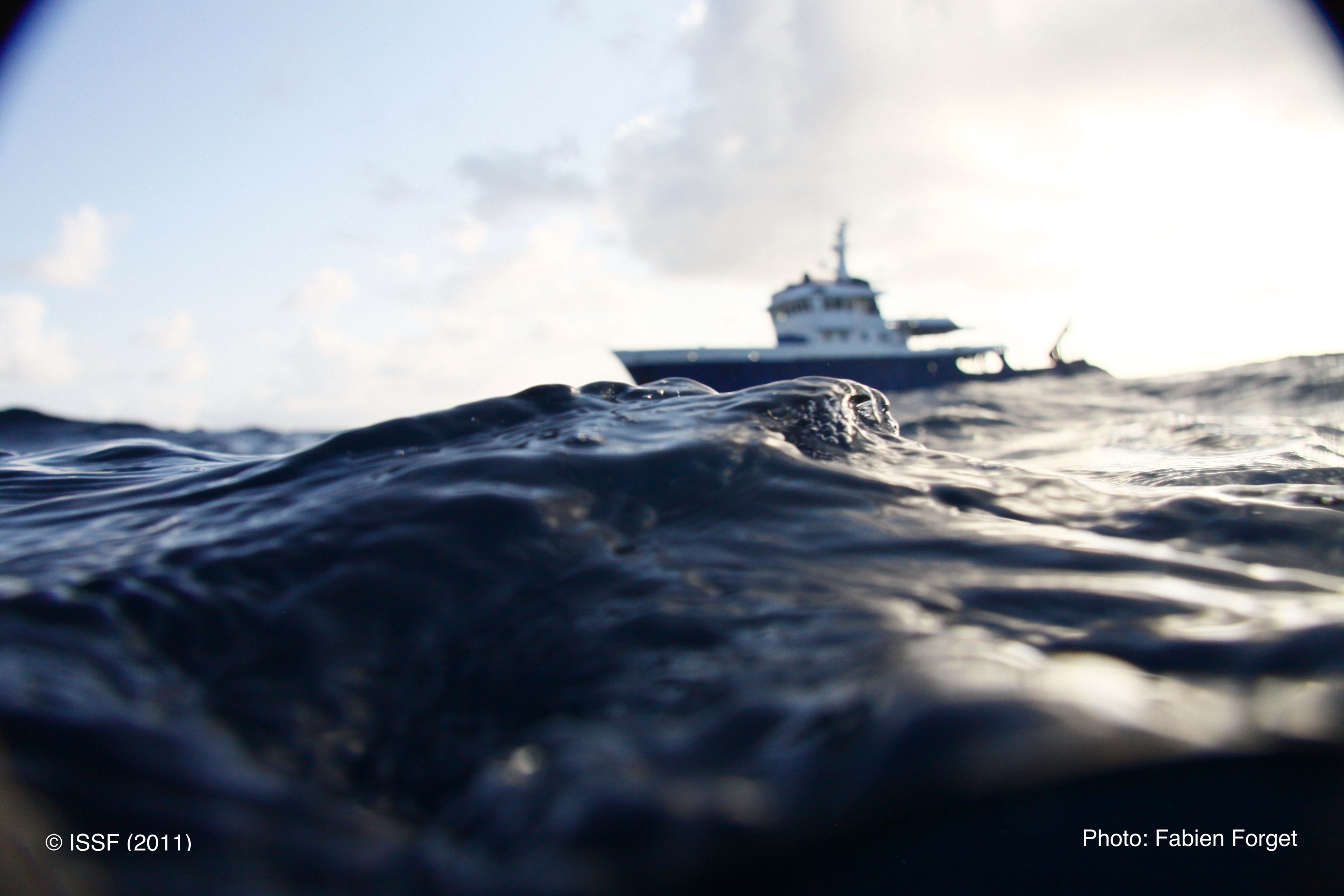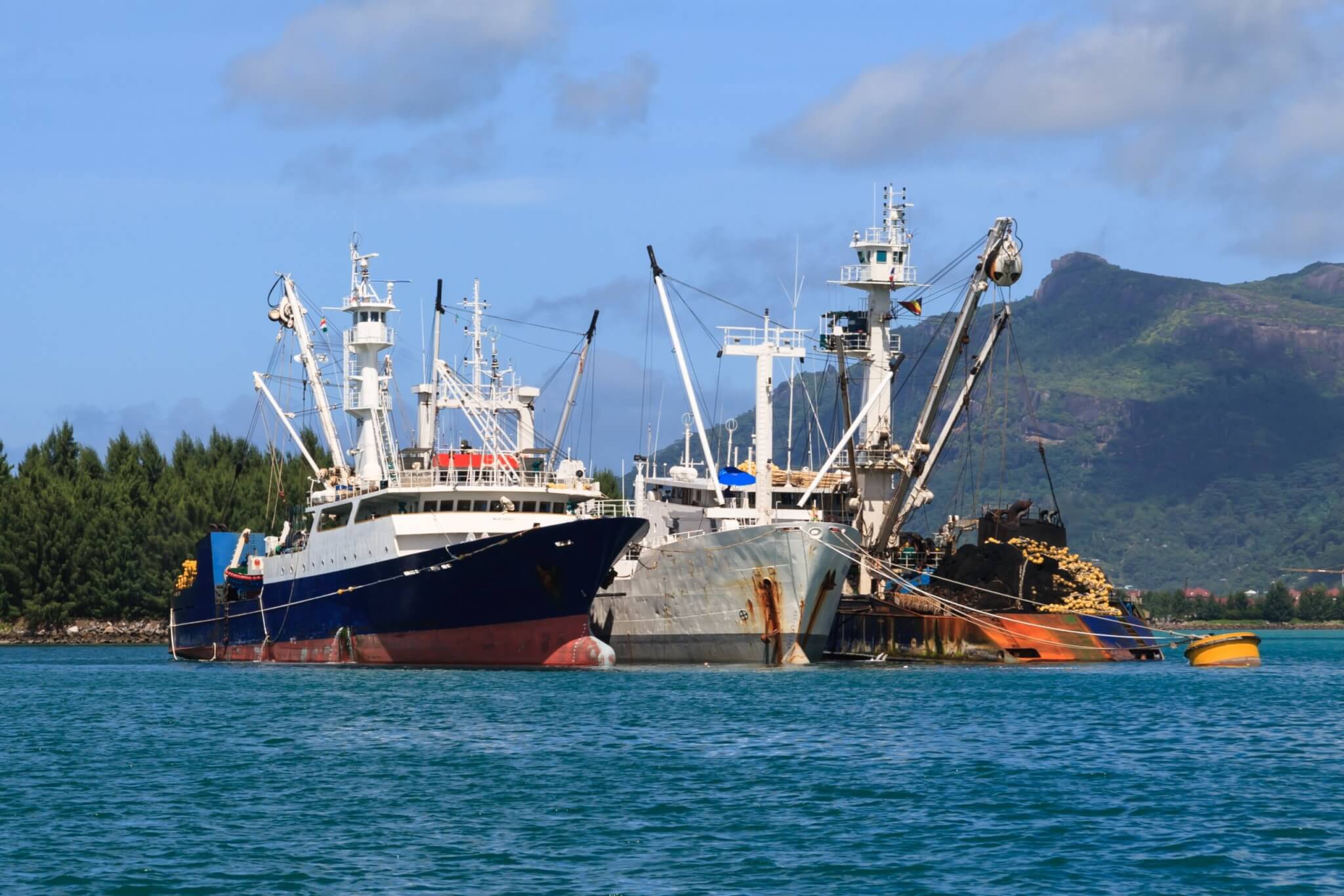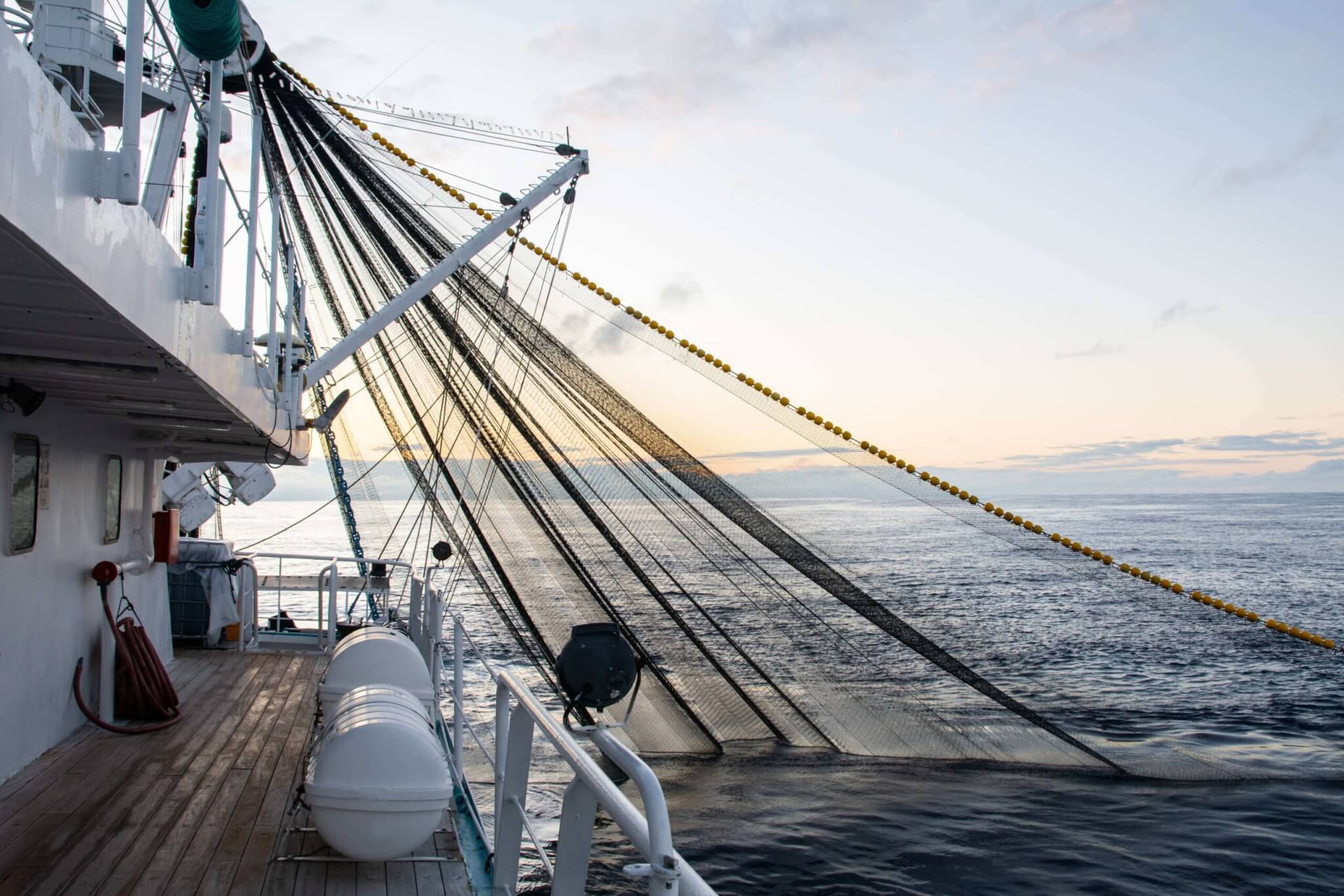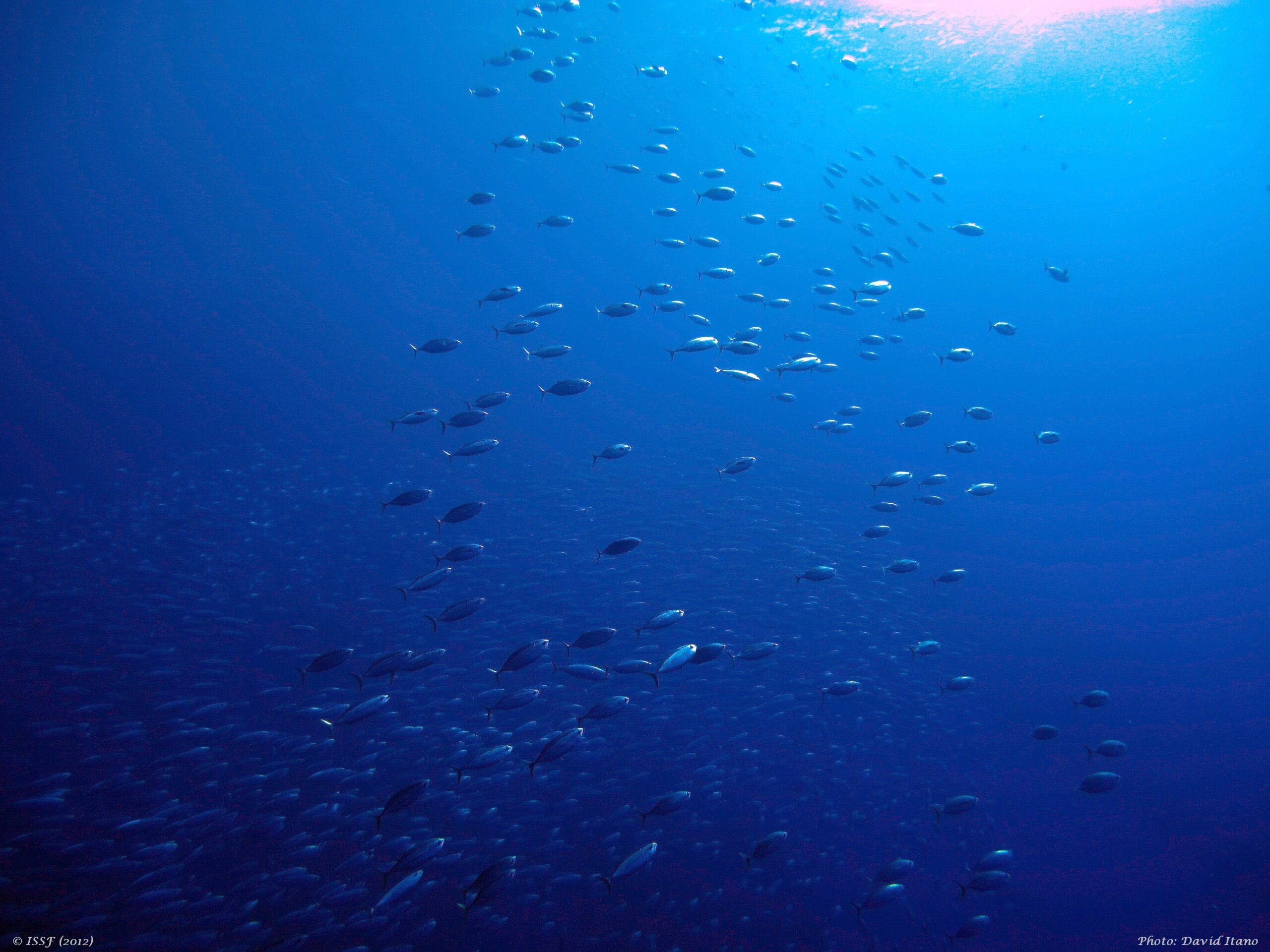
Tuna Tagging and FAD Investigations
Jeff Muir is with the Hawaii Institute of Marine Biology of the University of Hawaii. He recently was part of a team of researchers during a tagging cruise in the Central Pacific Ocean.
The most recent Pacific Tuna Tagging Program – a collaboration between the Oceanic Fisheries Programme of the Pacific Community (SPC), Tri Marine, and ISSF – was a successful mission to improve our knowledge of the biology of behavior of tunas and other species in Western and Central Pacific Ocean tuna fishing, bringing innovative new technology to the Central Pacific (CP) tagging experiments.
Building on ten previous successful CP cruises, CP-11 embarked aboard the Hawaii-based F/V Gutsy Lady 4 from Honolulu to study the movements, exploitation rates and fish aggregation device (FAD) association dynamics of tuna and other species. Our crew was outstanding, and aboard the 30-meter steel longline vessel on our nearly one-month long expedition, we were able to complete three experiments that tell us a lot about tuna and bycatch species around drifting FADs (dFADs) commonly deployed by purse seine fishers.
The vessel was outfitted with four tagging stations set up on the deck, one of which was set up specifically for archival/sonic tagging and supplied with a saltwater hose for irrigating the tuna during the surgery required when using these sophisticated tags. Most of the fish were captured on the surface of the water using dangler equipment, which allowed us to quickly catch and release tuna with a minimum fight time and hook damage. Dangler fishing is an exciting way of fishing, with bigeye tuna coming to the surface and crashing onto the trolled squids at the surface. Many times during tagging operations, the crew feeds fish to your tagging table as fast as you can tag, and the action can last for a while! But as fast as it starts, it can end because, well, it’s fishing.
Typically, the SPC’s tagging cruises fish primarily on anchored weather buoys, known as the Tropical Atmosphere Ocean (TAO) array along longitudinal bands in the equatorial Central Pacific. However, our partnership with Tri Marine, specifically their allowing access to some of their dFADs in the area, gave us new insight with respect to movement and dispersion on and off of dFADs as opposed to anchored FADs only, and it allowed the CP-11 cruise to greatly expand our fishing opportunities.
The crew tagged and released a total of 1995 topical tunas, comprised of 1587 bigeye (80%), 83 skipjack (4%) and 325 yellowfin tuna (16%). The full report from CP-11 can be found here.
Once the fish were tagged, three drifting fishing aggregating devices (dFADs) instrumented with VR4 global satellite communicating acoustic receivers acquired date from the acoustic tags in both tuna and non-tuna species. This data helps us to better distinguish different species from echo sounder buoy data and to study the behavior of tuna and non-tuna species at dFADs to better understand the effects of dFADs on them. We seek to better understand, for example, residency time, vertical behavior, and daily presence and absence patterns. Fine time scale information, such as each species relative depth at different times during the day are of interest, because they can help us determine if the timing of a purse seine set to avoid capturing certain species is a viable management option.
The VR4 receivers, still attached to the dFADs, are sending us data daily via satellite. When there are no more tagged fish around the dFADs, the study will be complete and then analysis will begin. We hope the coming data will help to gain a better understanding of the dynamics in order to improve sustainability of the tuna fisheries that rely on the use of these dFADs.
Further, all these tagging data and their subsequent recaptures are a vital part of the stock assessment process for bigeye tuna that SPC produces. This stock assessment, in turn, is used to determine the health and status of the bigeye stock in the Western and Central Pacific Ocean, which is currently overfished and experiencing overfishing.
We are eager to share the outcomes of these efforts and to join SPC again next year for another round of important work in the Central Pacific. Overall, it’s partnerships like these that comprise ISSF’s science-based work toward sustainable tuna fisheries. From identifying and defining a problem, to creating and testing solutions to that problem, and ultimately advocating to tuna fisheries managers worldwide for the adoption of those solutions – at-sea research and experiments spur ISSF’s holistic and impactful process.
Click here for a look at tuna tagging on the 2014 ISSF-SPC-TriMarine cruise.


